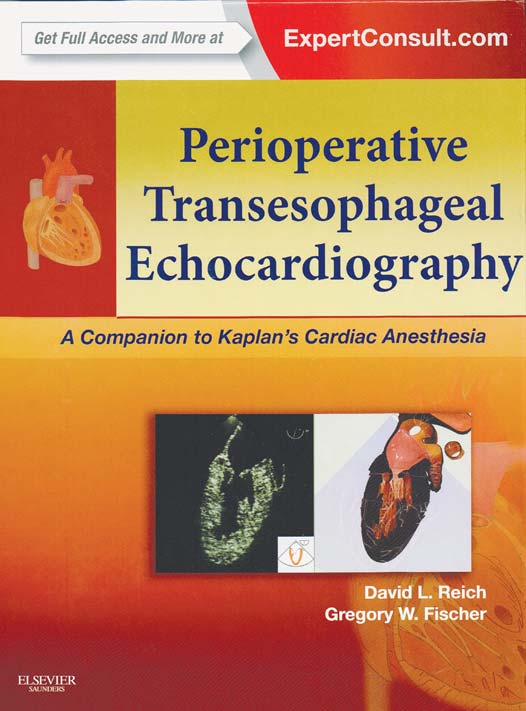Perioperative Transesophageal Echocardiography
A Companion to Kaplan’s Cardiac Anaesthesia.
Editor: David L. Reich, MD and Gregory W. Fischer, MD
Department of Anaesthesiology, Mount Sinai School of Medicine,
New York, New York, USA
Published by: Saunders; 1 Har/Psc edition (October 2, 2013)
Review by: Rergchai Varatorn, MD
Imaging Center, Bangkok Hospital, Bangkok Hospital Group, Bangkok, Thailand.

Perioperative Transesophageal Echocardiography (TEE) is used in the diagnosis of cardiac diseases. It was first introduced to diagnose cardiac valvular myocardium and pericardial diseases. But it has multiple applications beyond diagnosis. Cardio- logists are increasingly working closely with experi- enced echocardiographers in complex patient cases, and many cardiologists handle all their cases with the use of TEE. TEE is used during the operation and post-operatively in the ICU for monitoring the patient. It may be needed in cases of perioperative cardiac aortic surgery and during the postoperative period. The great benefit of TEE is that it can immediately detect any critical problem as it occurs. TEE can be applied to non-cardiac interventions also, such as liver transplantation and neurosurgical operations to detect the risk or presence of venous air embolisms. This enhances patient safety and successful treatment outcomes. TEE is undeniably an indispensable tool in the perioperative care of cardiac surgical patients. Recently, the use of TEE has been introduced to strengthen the anaesthesiology practice and teaching programmes. This guide covers the following major areas of interest:
• Basic principles of normal cardiac anatomyand physiology
• Cardiovascular pathology in TEE
• Monitoring the quality of perioperative echo-cardiograms
The guide encourages the reader to look beyond the use of TEE as a diagnostic tool, and to view the cardiac patient more holistically, with a more thorough understanding of the patient’s history and the planned clinical outcomes of the surgery. Thus the guide offers several chapters with contributions from cardiologists. It builds on existing texts to bring us the latest findings on three dimensional TEE, speckle tracking, and flow visualisation. We highly recommend all anaesthesiologists, cardiologists, cardiac surgeons and all physicians who work with cardiac, aortic and post-operative ICU patients to read this guide. Finally, the sub-speciality of cardiac anaesthesia has assumed an important role at the heart of the anaesthesiology profession. We encourage all anaesthesiologists to pursue the certification to achieve Testamur Status as a precursor to acquiring full certification offered by several international associations. This guide is a resource for the current and next generation of anaesthesiologists keen to further their career.